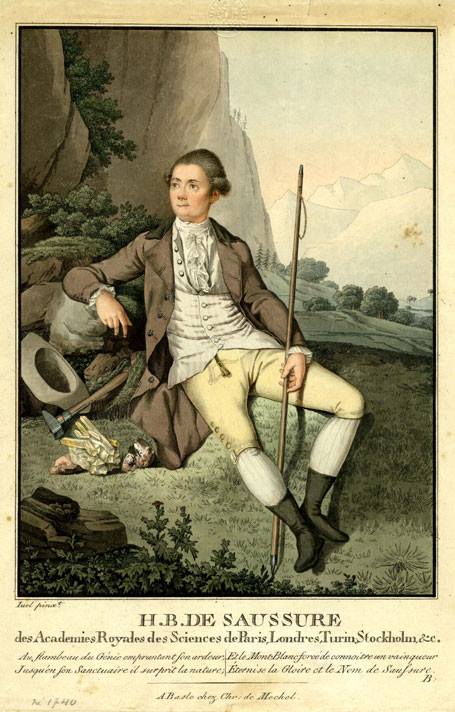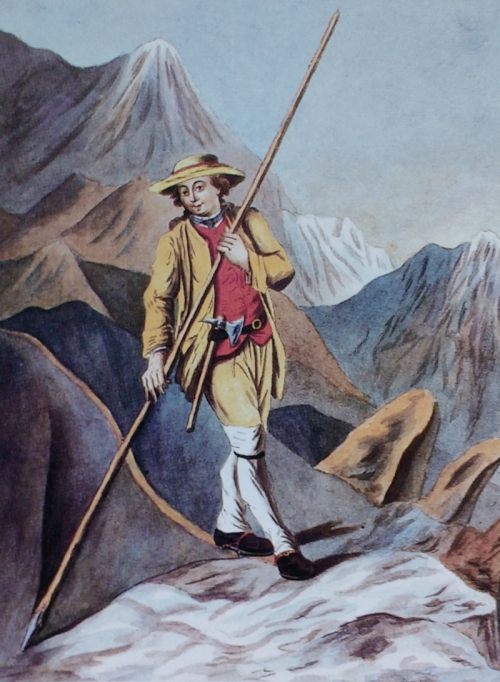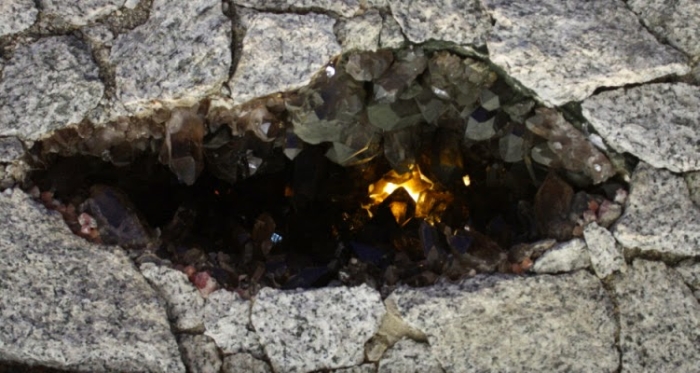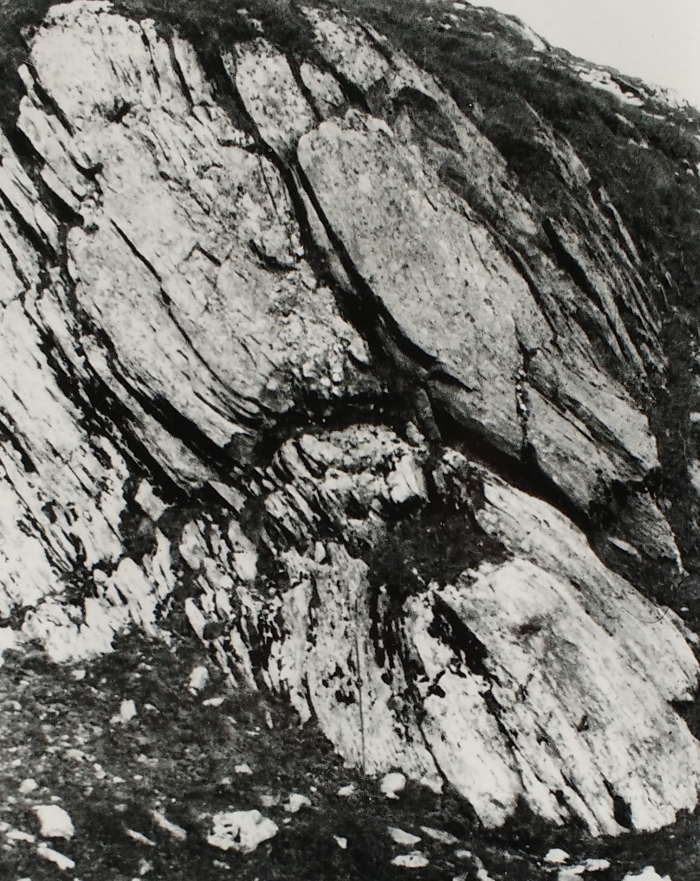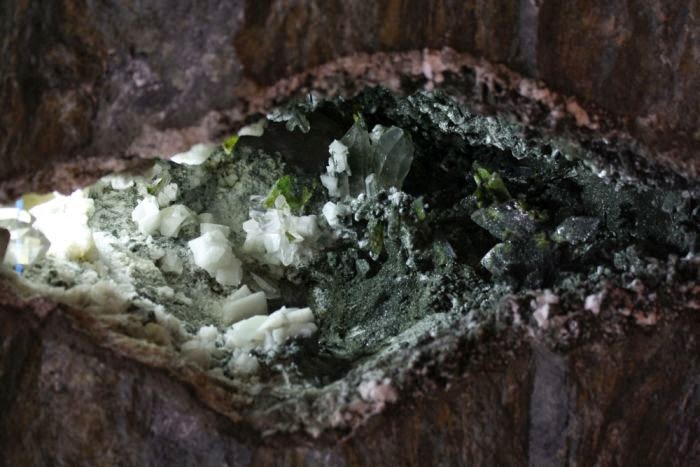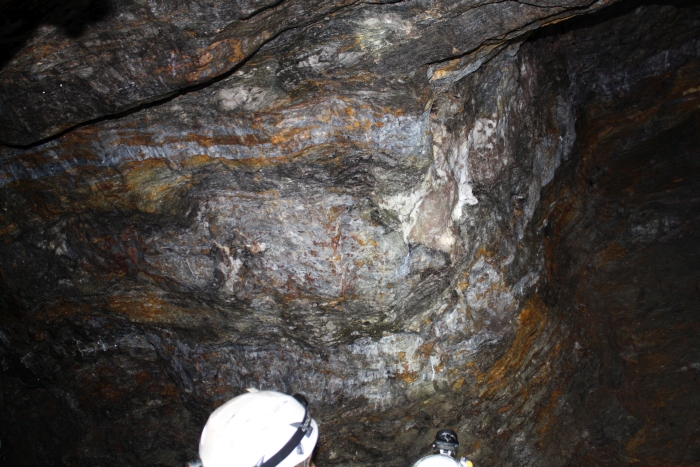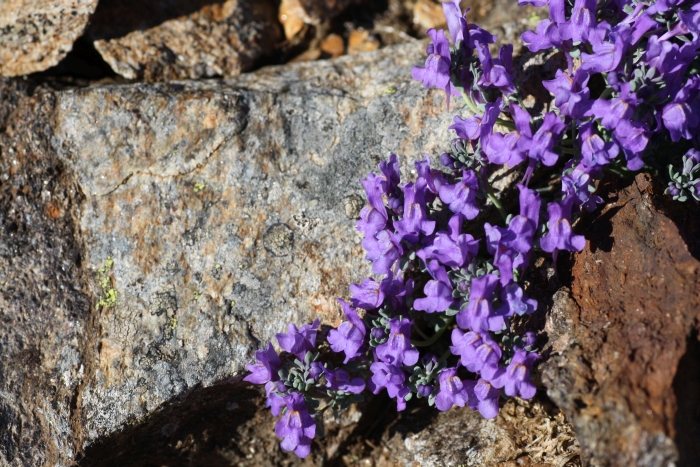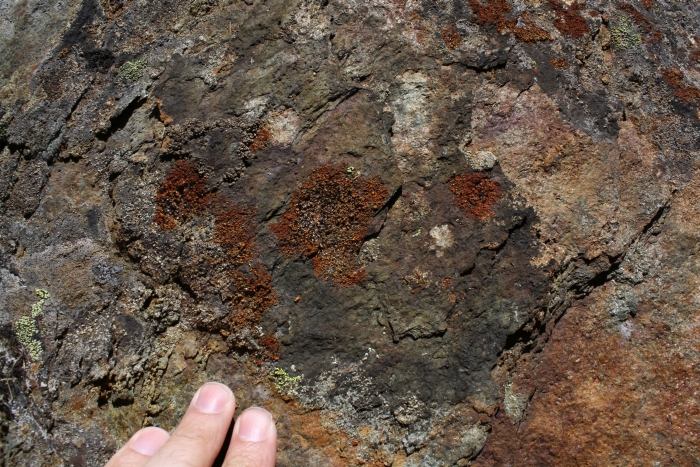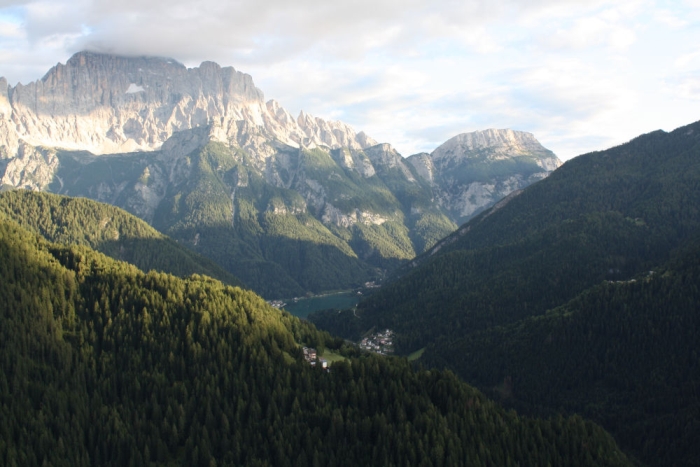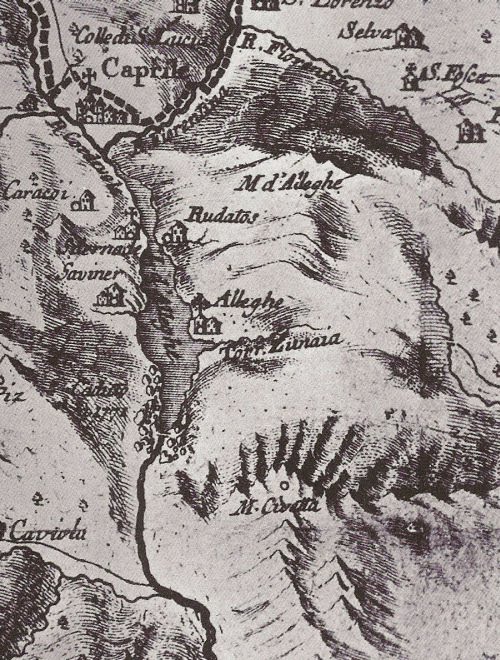The 1967 Star Trek episode “The Devil in the Dark” was written in just three days by screenwriter Gene L. Coon. Despite the rushed production, this first season episode is almost always included in every “best of” list. Trekkies value the story and message, as Kirk finds a peaceful solution to a conflict with an unknown life-form, but also love some remarkable classic scenes and lines, including “Pain! Pain! Pain!” and “I’m a doctor, not a bricklayer!” This episode holds also a special place in many geologist’s hearts as it features a lot of geo-babble.

It is one of the rare episodes starting not on board of the Enterprise, but in the mines of Janus VI. According to federation classification Janus VI is a type-E rocky planet with an iron core, similar in size to Earth but just 1.3 billion years old and apparently without atmosphere or life on the surface. It’s rich in minerals and elements, like gold, uranium, platinum, cerium and the fictional pergium. Mining an extraterrestrial world is still fiction, but science shows that it may be profitable. Asteroids are rich in platinum, iridium, palladium and gold. One hundred tons of rock from an asteroid might today be worth more than 9,000 dollars, compared to just 60 dollars worth the same amount of terrestrial rocks. Estimated 5,000 to ten millions of asteroids can be found near Earth and companies are already dreaming of future prospecting and mining spaceflights. Mining asteroids would not necessarily benefit Earth, as bringing the ore to Earth would be costly, but might benefit nearby colonies, outposts or industrial complexes. In “Devil in the Dark” it is mentioned that “dozen planets depend on you for pergium.” Pergium is somehow needed for common power generators (but apparently outdated, as Chief Engineer Scotty hasn’t seen such a thing in over twenty years), providing energy not only for the colony on Janus VI but other worlds.
The mining colony in the episode was successfully operating for over fifty years but after the miners opened up a new level deep within the planet suddenly a monster started to attack and kill people. The Enterprise sends Kirk, Spock and McCoy for help. Spock during a meeting with the chief engineer Vanderberg, the administrative head of the mine, notes a strange sample in the office:
“It’s a silicon nodule. There are a millions of them are down there. No commercial value.”
“But a geological oddity, to say the least. Pure silicon?”
“A few trace elements. Look, we didn’t call you here so you could collect rocks.”

Later Spock and Kirk are able to injure the supposed monster and recover what seems to be living tissue, however, a close inspection reveals the tissue to be “fibrous asbestos, a mineral.” Asbestos is indeed a silicate mineral, which is found as aggregates of thin fibrous crystals on Earth.
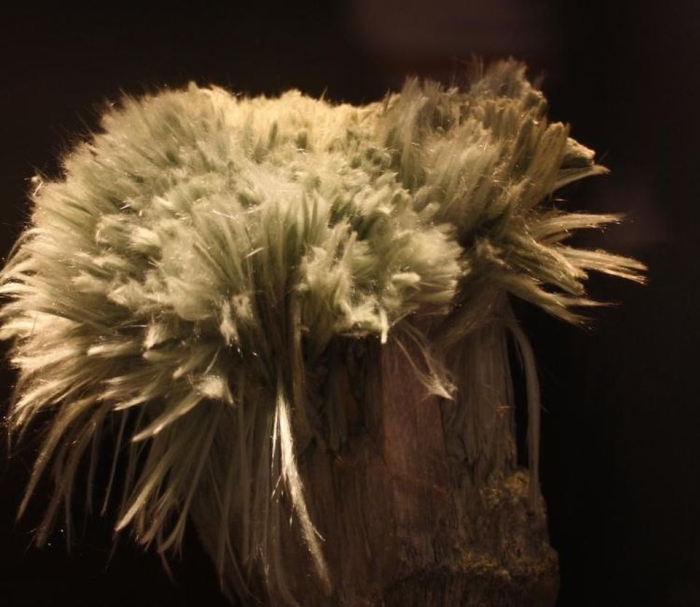
After this discovery Spock speculates that the supposed monster is an alien life-form, not based on carbon compounds as on Earth, but on silicon. The strange silicon nodules destroyed by the clueless miners are eggs and the creature was just defending her children. After Spock joins with the mind of the creature a peaceful agreement is found between the miners and the alien. The miners will not hurt or kill the creatures and the creatures will allow the miners to use their tunnels to mine the deeper pergium-rich layers of the planet (and so become rich). The Horta, as this alien is named in the series, use a sort of hot acid to melt their tunnels in the solid rocks.
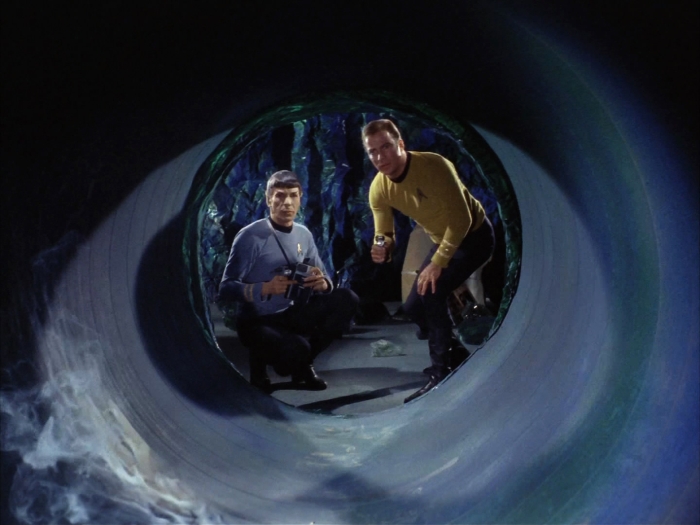
The silicon-based life-form as depicted in Star Trek is surprisingly scientifically accurate. In life as we know it only ten elements play a mayor role. Carbon is one of the most important elements, followed by oxygen, nitrogen, hydrogen, potassium, calcium, magnesium, iron, phosphorus and sulfur. Carbon is common in the universe but relatively rare on Earth. Strangely silicon is quite common in Earth’s rock, but plays only an insignificant role in biological processes. Some microorganisms, like radiolarians and diatoms, use silaffins and silica-hydrogels to build their tiny shells. Siliceous sponges use silicon to support their body by constructing a framework composed of tiny needles of silicon dioxide. However, all those organisms use silicon only to build their skeleton, not in their living tissue or metabolism.
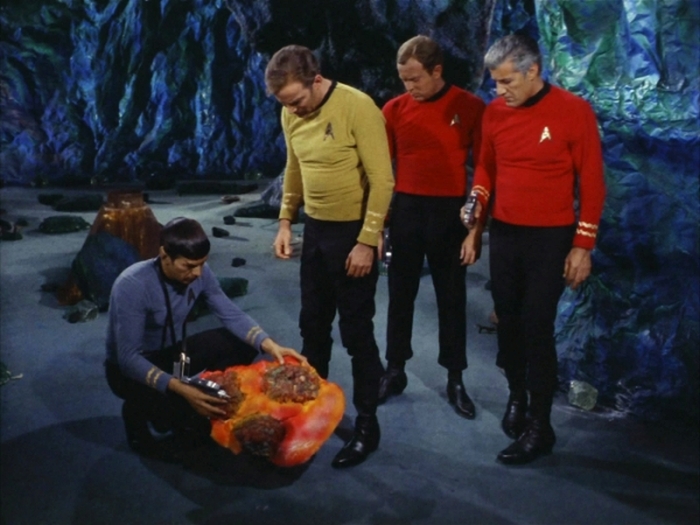
Carbon, despite its relative rarity on Earth, has some important advantages for life on Earth. It can form stable and complex macromolecules within the range of terrestrial temperatures. Living bacteria are found on Earth in 240°F hot springs and on frozen rocks of Antarctica, thriving at -60°F . Atomic bounds between carbon-carbon, carbon-oxygen and carbon-hydrogen atoms are strong and the formed molecules are soluble and stable in water. Water is so important for carbon-based life as it´s a perfect environment for molecules to react with each other, resulting in a life-sustaining metabolism. Silicon, like carbon, can form stable bounds with itself and other elements like carbon, nitrogen, phosphorus, oxygen, sulfur and many metals. Such silanes can form sheets, chains, tubes and even complex three-dimensional frameworks. In theory silanes could be combined to form organelles of a living cell and even reactive molecules sustaining an alternative metabolism.
That said, silicon shows a very strong affinity to oxygen and hydrogen. On Earth the tissue of a silicon-based life-form would slowly react with the oxygen of the air and the hydrogen in the water, corroding and killing the creature. Doctor McCoy even mentions this fact in the episode. However, Spock notes that the creature comes from within the planet, where suitable conditions for silicon-based life might exist.
Silicon-life would need an oxygen-free atmosphere, an environment with no water and an alternative liquid for its metabolism. Possible alternative solvents that may work include liquid methane and ethane, but also sulfuric and hydrocyanic acid. The acid could explain the (fictional) ability of the Horta to “digest rock” and to “tunnel” so quickly “for nourishment” through the planet. As such compounds are unstable at higher temperatures, the silicon-based life-form would best thrive in a very cold environment.
Could such life really exist? Unfortunately we don’t know for sure and the Horta is never again mentioned in the original series. Maybe this question will be answered by future generations, when humanity encounters life, but not as we know it. How will we react? In “The Devil in the Dark,” the first response was fear and hate, in the end overcome by knowledge and emphaty – a message in the best tradition of Star Trek.
